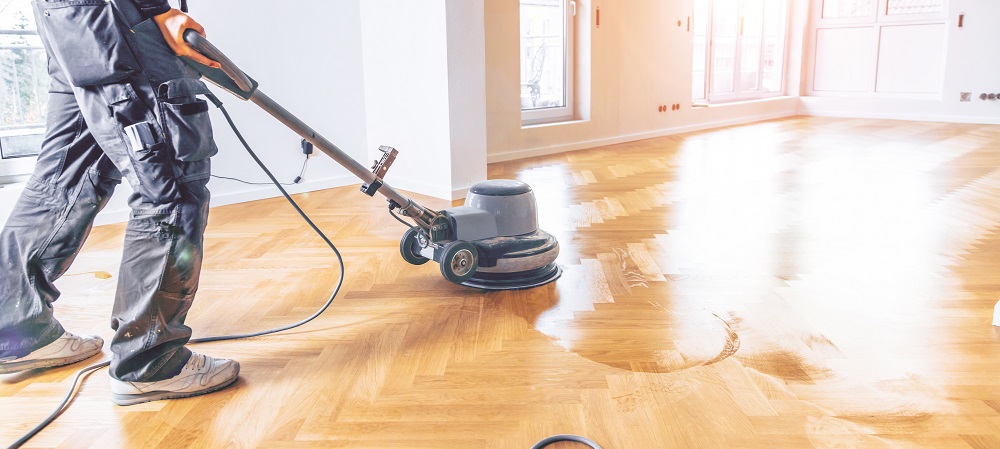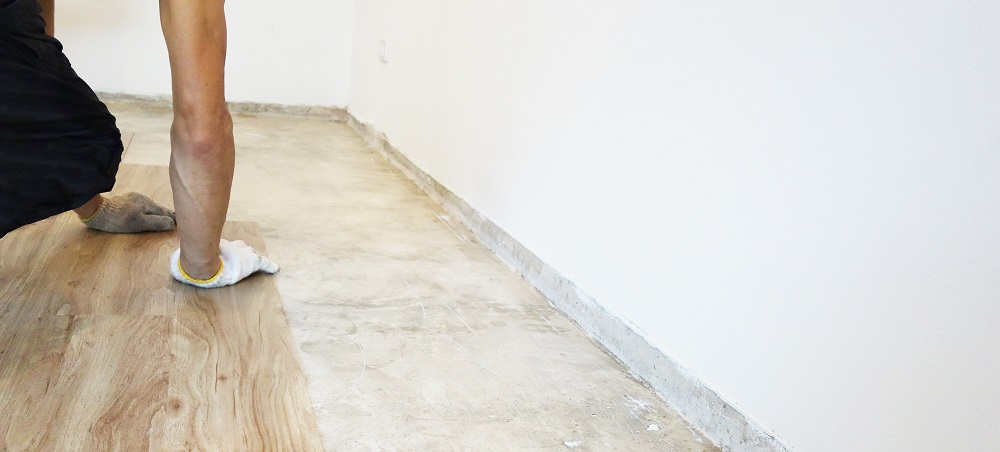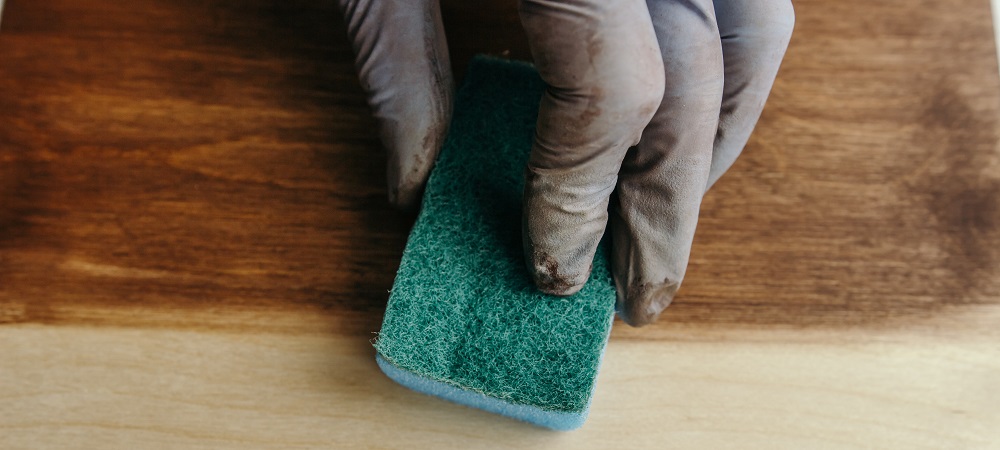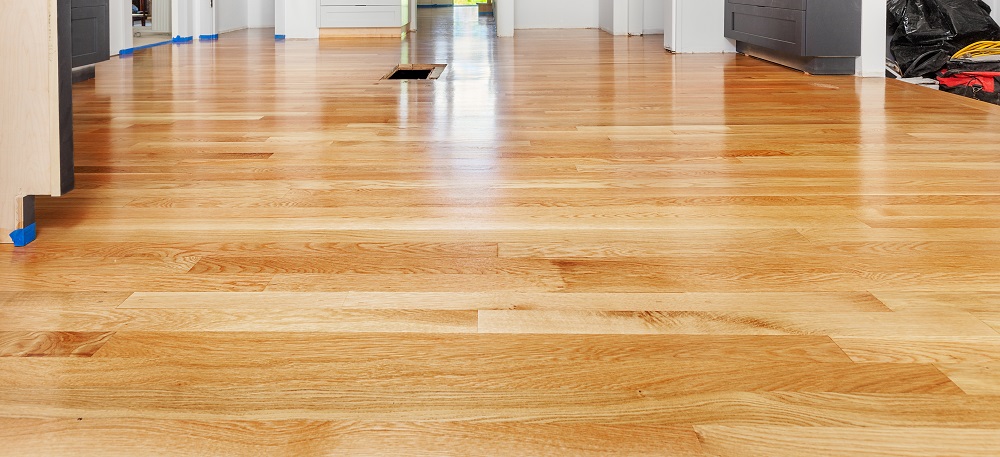The refinishing vs. replacing hardwood floors debate surfaces when there is a problem with floors. From scratches to dents, gaps to being ancient, several reasons warrant refinishing or replacement in floors.
When these abnormalities occur and persist, it is only right to consider your next move. But, how do you know whether to refinish, if you can afford a replacement? How do you determine if you should go the other way?
Several factors influence this decision, and this blog post will guide you through making it. Hardwood floors get dull, scratch, and suffer a general degrade in appearance, with time. But, it stands out from other flooring because you can refinish it. And just like other floors, some conditions necessitate a replacement.
In its lifetime, you can refinish a hardwood about ten to twelve times. As an additional tip, you can do this refinishing yourself, though mistakes may happen. Whether you want to refinish or replace hardwood floors, it is best to have a professional take a look at your floor. This way, you get an expert’s first-hand look at the floor and can select the best revamp option.
Owing to this necessity, this post will only be a generalized view of hardwood floors. The differences in floor finishes result in peculiarities. For this reason, an expert should adequately help you choose between refinishing vs. replacing hardwood floors in your home. However for DIY enthusiasts, here’s what you need to know!

What do Hardwood Refinishing and Replacement Entail?
Before getting in the refinishing vs. replacing hardwood floors debate, let’s know what they entail. Refinishing your floor involves sanding the topmost layer of the floor. Then, follows the application of fresh stain and lacquer on the existing floor.
Refinishing floors does not require so much technical know-how, like replacing the floor. All you need for the job are; drum sander, stain, and lacquer. The various tips to refinishing hardwood flooring save cost while making your floor shiny again.
That’s all there is to refinishing hardwood floors. The breakdown of the process is more like trying to paint a house. But replacing hardwood floors is more technical. Professionals use different patterns and techniques to install floors.
How firm the professional fixes the floor is dependent on how busy space will be. But, whatever the case, it can only take another professional to replace hardwood floors.
Replacing hardwood floors involves removing the old floor with a spade bit, power drill, wood chisel, etc. After prying up the old board, you cut out equal strip surfaces for the replacement. Getting this into position requires tapping, nailing, and patterning. These are technical procedures.
Since you cannot do this yourself, you will need to hire a professional. Replacement needs new wood and other resources, and service payment for professionals. All these culminate into an endeavour that is more cost-intensive than refurnishing. So, why should you have the refinishing vs. replacing hardwood floors dilemma in the first place?
Related article: Vinyl vs. Laminate Flooring
Refinishing vs. Replacement: Why You Need Them?
While the refinishing vs. replacing hardwood floors debate remains valid, you can prevent both. You can prevent most of the conditions that damage or degrade your floor. From moisture problems to atmospheric problems to maintenance problems, there’s a lot you can prevent.
Moisture-related problems
Moisture-related problems will most likely call for a replacement of the hardwood floor. The various moisture-related problems that can happen to floors include;
Water on or under the floor:
If your space has below-the-surface water systems, water can be a problem. There is a tendency of water spills below the subfloor. It can also occur between the subfloor and the flooring. In some cases, when the subfloor does not dry properly, it can later introduce water to the flooring.
The same goes for water spills. If you don’t tackle water problems promptly, you may soon have to choose between refinishing vs. replacing hardwood floors.
High humidity
Humidity closely relates to water problems. In humid conditions, improper humidity control can lead to an expansion of the wood. This can cause major damages that necessitate a total replacement.
Improper acclimation
Acclimatization of hardwood to the environment of use is vital. This process involves storing it away in similar conditions. In this store, the hardwood flooring stabilizes its moisture level and brings it to sync with that of the environment. If not done properly before installation, it can be a major problem. You may not have this problem if you buy high-quality hardwood floors in Toronto.
Poor installation
Wood will always absorb water, then expand. With poor installation, the flooring will experience major problems. Hence, the professional needs to do the job with precision the first time. If poor installation results in issues, then you’ll have to redo the floor again.
Physical factors that we will call maintenance-related problems can degrade the floor. In this case, depending on how extensive the damage is, you may choose to refinish or replace hardwood floors.
Maintenance-related problems
These problems result from daily activities, and can sometimes be beyond your control. Here are some examples of these problems.
Scratches
When there are lots of scratches on your floor, it’s high time you refinish it. If your floor uses a darker stain, these scratches are more obvious. Few scratches may not be a source of concern, but extensive scratches are. Refinishing comes in handy in this case.
Gray boards
When the boards turn gray, you need to take steps before further damage. Refinishing will help in this case. But if you leave it longer, replacement may be the only solution to the deterioration.
The gray shade of the floor simply means the stain has worn off. After this, the wood may absorb water, leading to a replacement problem. After some time, it becomes hard to determine whether to refinish or replace the floor. When the floor starts to absorb water, the gray colour changes to black. At this point, it becomes too late to refinish.
Sun damage:
Sun rays damage the finishing of floors. This causes the floor to fade and become dull. You will notice this in parts closer to the window. Proper maintenance is vital to prevent the refinishing vs. replacing hardwood floors debate from happening.

Refinishing vs Replacement: How To Choose the best for your Hardwood Floors?
In this section, we will explore the factors that should guide your decision. To do this, we believe that you can do both if need be.
Refinishing will always be a cheaper option if the price is your main focus. Other than this, the following options determine the best option between refinishing vs replacement.
Time
Surprisingly, refinishing a hardwood floor takes more time than replacing the floor. Refinishing a floor requires that you make a lot of mess before things fall in place again. On average, refinishing hardwood floors in Toronto takes up to four or five days.
With replacement, you need to remove the old floor and get a new one. Though, you can only do this with the help of a professional. But, overall, it takes less time. Hence, if time is what you don’t have, it’s better to simply choose the latter in the refinishing vs replacement discourse.
Age
Time flies, and you may use a particular floor for decades without noticing. The only way to tell is that the floor will surely be dull. Old hardwood floors may resist refinishing. If your floor dates back some decades, you may have done a couple of refinishing.
In this case, it may resist further refinishing, as it won’t make much aesthetic difference. It’s better to just get something new and fresh for a change.
Aesthetic factors
Hardwood floors are in common use because of the aesthetics they offer. The aesthetics of the floor affects the overall outlook of the space. These aesthetics factors include; fashion, species, artistry, and direction.
If these are still up to your taste, then a simple refinish may suffice. But, if you want to upgrade the aesthetics of your floor, then replace the floor.
Can you refinish the floor?
You cannot refinish all types of hardwood floors. As we pointed out earlier, there are some damages that out-rightly call for a replacement. In these cases, there is no need to refinish the floor.
Such damages include structural damage, improper flooring, damages to water, and extreme wear. These damages are beyond correction, simply install a new floor.
Related article: Solid vs Engineered Hardwood Flooring
Pros and Cons of Refinishing vs. Replacing Hardwood Floors
There are upsides and downsides to whichever option you decide to go with.
Pros of Hardwood Refinishing
Refinishing your floor results in the following benefits:
- An improvement to the floor’s aesthetics. Especially if you leave it to a professional, your floor gets shiny again.
- You save money with refinishing. You simply need to sand the floor and apply a new stain. You may even save costs by doing it yourself.
- Improves the value of your home. When you refinish your floor, it looks new. This improves your home’s value if you ever look to sell.
- Safety and protection from pests. Damages to a hardwood floor can be a breeding ground for pests. You also generally save your floor from further damage.
The only downside to refinishing your hardwood floor is that it takes more time.
Pros of Hardwood replacement
Replacing your hardwood floor has the following benefits
- Increases the value of your home.
- It gives your home a new look and feel. You get to change the style of the floor and use better quality hardwood.
- It offers you better efficiency and functionality.
The only downside to replacing your hardwood floor is that it costs more.

Final Take
Property owners face the refinishing vs. replacing hardwood floors dilemma infrequently. But when it happens, it can be a tough decision to make.
As we made you understand at the beginning of this post, it all depends on your floor’s peculiar condition. This post simply gives a general perspective on how to choose between refinishing and replacing flooring in spaces.
Upon any extensive damage, it is best to prepare to buy new hardwood floors in Toronto. The quality of the hardwood you then buy in this case matters. Knowing this, we provide you with the best hardwood for floors in Toronto. Whatever type of hardwood you want for your floor, LV Flooring has it. Check out our online store today!
Related article: Hardwood vs Laminate Flooring


